It’s a familiar scenario for many: you’ve just finished a balanced lunch or a satisfying dinner, and suddenly an overwhelming desire for something sweet takes over. Even if you’re not particularly hungry, the urge to reach for a cookie, chocolate bar, or scoop of ice cream can feel irresistible. This post-meal craving isn’t just about indulgence or a lack of willpower—it’s a physiological and psychological phenomenon rooted in complex biological signals, learned behaviors, and emotional cues. Understanding the reasons behind why you might crave sweet after food can help you respond in a healthier, more mindful way that supports both nutritional goals and long-term wellness.
For individuals seeking to build a healthier lifestyle grounded in mindful eating, uncovering the science and psychology behind cravings can offer clarity and empowerment. The question “why do I want something sweet after I eat” is not trivial—it reflects a deeply ingrained interaction between body and mind, shaped by evolution, habit, hormones, and culture. In this article, we’ll explore expert-backed insights that explain why these cravings occur, what they mean, and how you can navigate them thoughtfully. Along the way, we’ll also look at evidence-based strategies that honor your body’s cues while keeping your health and nutrition on track.
You may also like: Why Am I Craving Sweets All of a Sudden? Expert-Backed Reasons and How to Stop Sugar Cravings Naturally
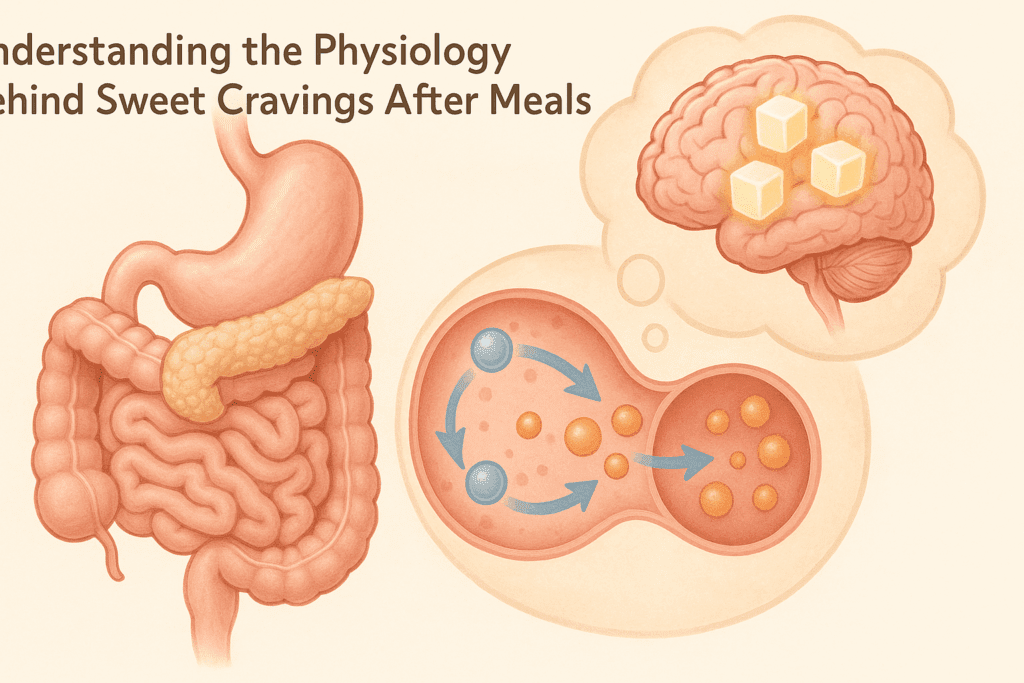
Understanding the Physiology Behind Sweet Cravings After Meals
To fully appreciate why we often experience a desire for sweets after eating, it’s important to understand how the body and brain communicate during and after meals. Food intake, especially when it includes carbohydrates, triggers the release of insulin—a hormone that helps regulate blood sugar. As insulin facilitates glucose absorption into cells, blood sugar levels can drop slightly, particularly after a high-carb meal. This modest dip can lead the brain to signal for more glucose, its preferred energy source, resulting in a craving for sugary foods.
This response is not necessarily indicative of an underlying health issue; rather, it’s part of a finely tuned regulatory system designed to keep energy levels stable. However, when meals are unbalanced—say, overly rich in simple carbohydrates and lacking in fiber or protein—the blood sugar spike and subsequent dip can be more dramatic. This can amplify post-meal cravings, creating a cycle of highs and lows that leaves you repeatedly craving sweets after meals.
Additionally, the brain’s reward system plays a crucial role in this pattern. Dopamine, the “feel-good” neurotransmitter, is released when we eat palatable foods, especially those rich in sugar and fat. Over time, if you regularly satisfy your cravings with sweet treats, your brain may begin to associate the end of a meal with the pleasure of dessert. This learned behavior can persist even when you’re not physiologically hungry, reinforcing the question: why do I want something sweet after I eat?
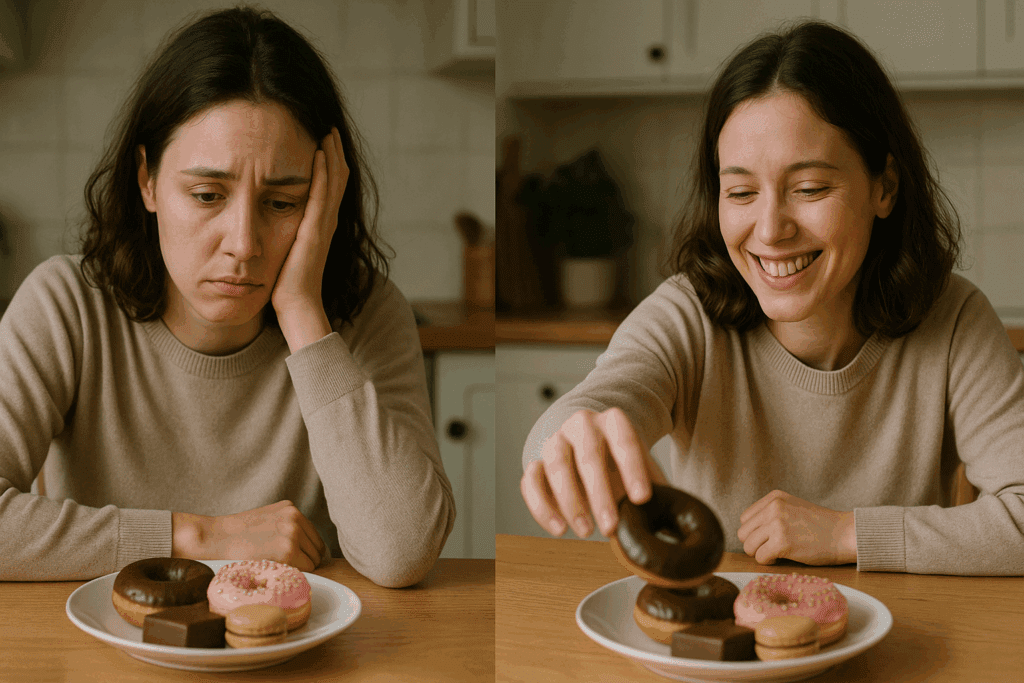
Emotional and Psychological Triggers of Craving Sweets After Meals
While physiology plays a key role in sweet cravings, emotions and psychology are equally influential. Food is often closely tied to emotion, comfort, and routine. For many, dessert is a nostalgic ritual, a reward for completing a task, or a source of solace after a stressful day. These associations can powerfully influence behavior, especially when combined with environmental cues like the sight or smell of dessert, or simply the habit of ending a meal with something sweet.
Emotional eating doesn’t always stem from negative feelings; it can also arise from celebration, social bonding, or a need for relaxation. The comforting aspect of sweets, especially chocolate and baked goods, can momentarily soothe anxiety or boredom, making them a common emotional fallback. Understanding these emotional drivers can help you distinguish between true hunger and psychological craving.
In mindful eating practices, one important skill is learning to pause and ask yourself what you’re truly feeling in the moment of a craving. Are you actually hungry, or are you seeking pleasure, distraction, or relief? This self-inquiry can illuminate deeper patterns, making it easier to respond with intention rather than automaticity. Craving sweets after meal is not inherently unhealthy, but when it becomes habitual or compulsive, it can interfere with both physical health and emotional well-being.
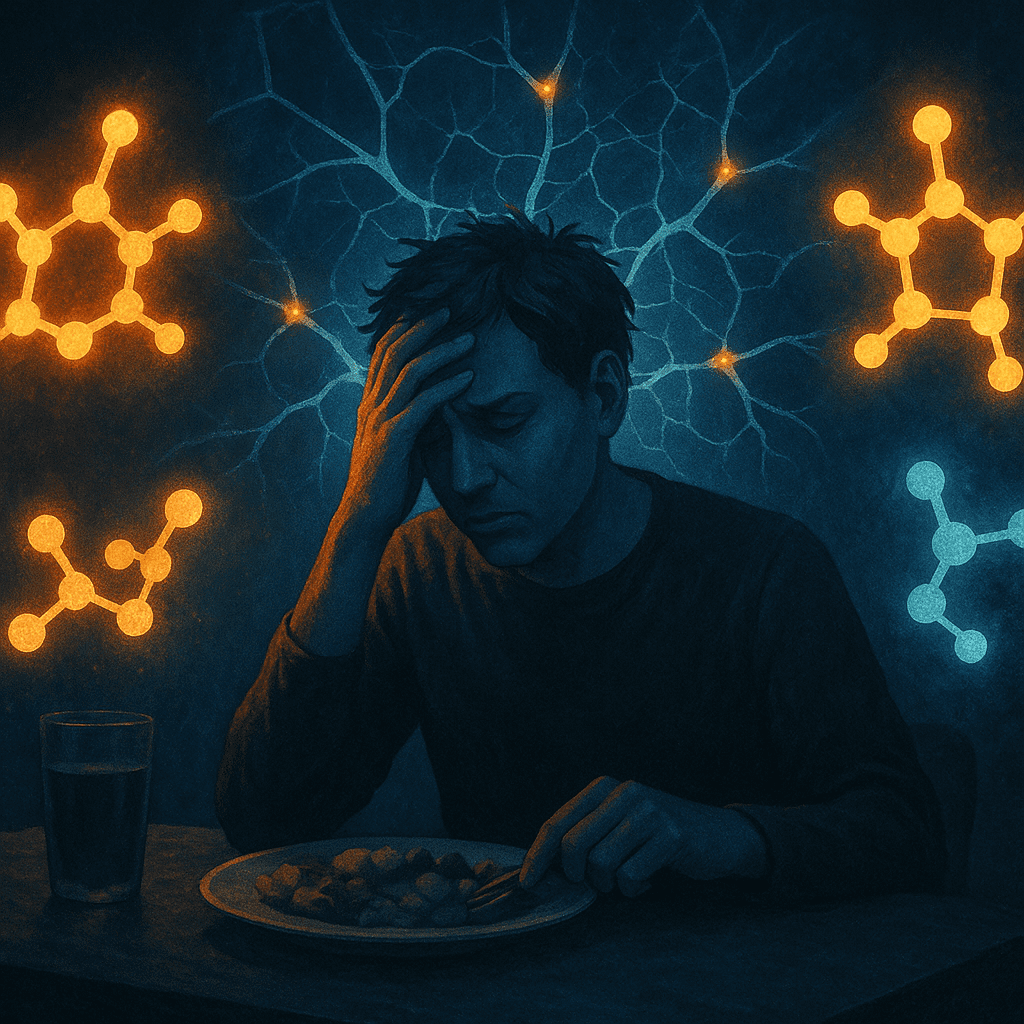
Hormonal Influences That Drive the Urge for Sugar Post-Meal
Beyond insulin, several other hormones influence your appetite and cravings. Ghrelin, often dubbed the “hunger hormone,” typically decreases after meals. However, in individuals with disrupted circadian rhythms, irregular eating patterns, or chronic stress, ghrelin levels can remain elevated, potentially intensifying the desire for additional food—even sweets—shortly after eating.
Another key hormone is leptin, which helps regulate energy balance and signals satiety. In cases of leptin resistance, which is common in individuals with overweight or obesity, the body doesn’t efficiently recognize fullness, leading to ongoing hunger cues and an increased tendency to crave sweet after food. This hormonal disconnect can make it more difficult to trust your own satiety signals, often prompting the question: why do I want something sweet after I eat, even when I know I’ve had enough?
Cortisol, the stress hormone, also plays a significant role in cravings. Chronic stress elevates cortisol levels, which can increase appetite, particularly for high-sugar, high-fat foods. This is an evolutionary adaptation meant to help the body replenish energy after perceived threats. In today’s fast-paced world, however, stress is often psychological rather than physical, leading to unnecessary eating that satisfies emotional rather than nutritional needs.
The Impact of Diet Composition on Craving Sweets After Food
What you eat during your meals can significantly affect whether you’ll experience cravings afterward. Meals high in refined carbohydrates, such as white bread, pasta, or sugary drinks, digest quickly and lead to rapid blood sugar spikes. As these levels fall, your brain may prompt you to restore balance with more sugar. In contrast, meals that include high-fiber vegetables, whole grains, healthy fats, and plant-based proteins digest more slowly and provide sustained energy, reducing the likelihood of a craving soon after eating.
Interestingly, fat and protein not only contribute to longer satiety but also dampen the glycemic impact of carbohydrates. Including avocados, legumes, nuts, seeds, or tofu in your meals can buffer post-meal blood sugar fluctuations. A balanced meal composition supports more stable mood and energy, helping to minimize the physiological urge for a post-meal sugar fix.
Fiber, particularly soluble fiber, also plays a key role. It slows gastric emptying and reduces the rate at which glucose enters the bloodstream. Including foods such as oats, flaxseeds, lentils, and apples in your meals can naturally reduce the chances of craving sweets after a meal. By understanding how meal composition affects cravings, you can proactively design meals that nourish your body while helping to reduce unnecessary sugar intake.
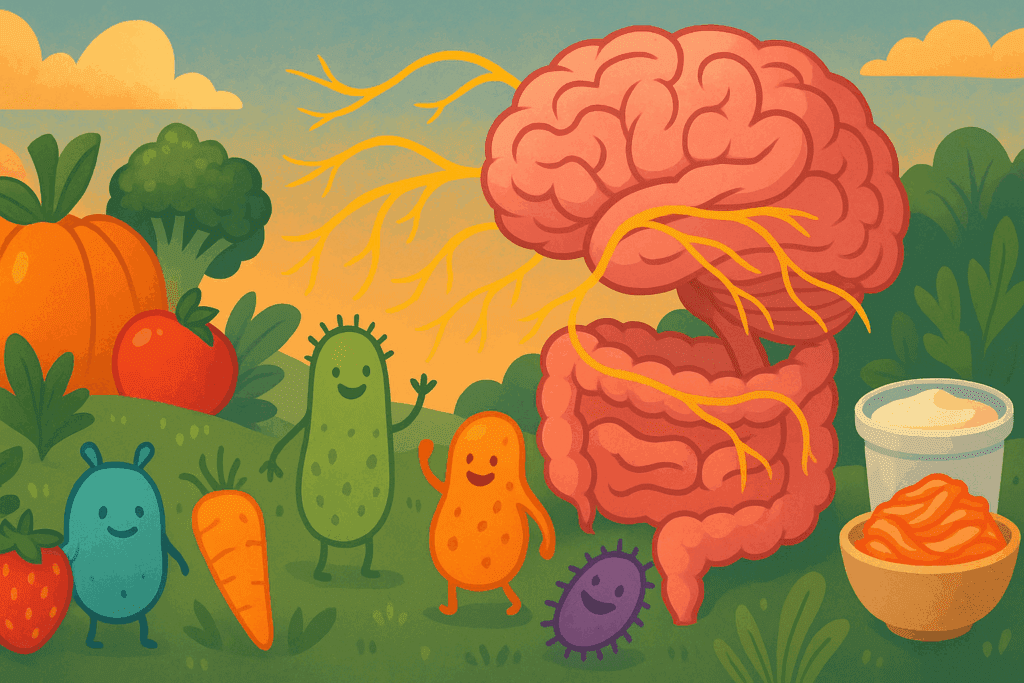
The Role of Gut Microbiota in Sweet Cravings
An emerging field of research sheds light on the fascinating connection between gut health and food cravings. The trillions of microorganisms residing in your gut—collectively known as the gut microbiota—play a powerful role in regulating digestion, immune function, mood, and appetite. Studies suggest that certain gut bacteria can influence cravings by sending signals to the brain via the gut-brain axis.
Some species of bacteria thrive on sugar and may actively prompt their host (you) to consume more of it to support their survival. This microbial manipulation can contribute to persistent sugar cravings, particularly if your diet has historically been high in refined carbohydrates and low in diversity. Over time, this imbalance can perpetuate a cycle of sugar dependence, causing you to crave sweet after food even when your body doesn’t physiologically require more calories.
Supporting your gut microbiota with a diverse, plant-rich diet that includes fermented foods like kimchi, sauerkraut, and unsweetened yogurt—as well as prebiotic-rich foods like garlic, onions, bananas, and legumes—can help restore microbial balance. When your gut is healthy, your brain receives more accurate hunger and satiety signals, potentially reducing the frequency and intensity of post-meal sweet cravings.
Cultural and Behavioral Norms That Reinforce the Sweet Tooth
Beyond biology, cultural practices and upbringing play a strong role in shaping our eating habits. In many cultures, dessert is a standard component of meals, especially dinner. From a young age, many children are taught that sweets are a reward or a sign of a meal’s completion. This consistent reinforcement wires the brain to expect sugar at the end of a meal, making it difficult to break the habit in adulthood.
Social settings can also reinforce sweet cravings. Celebrations, holidays, and gatherings often revolve around sweet treats, and saying no to dessert may be perceived as unusual or even antisocial. These cultural patterns can blur the line between biological craving and social expectation, leading many to ask themselves: why do I want something sweet after I eat, even when I’m not hungry?
Changing deeply ingrained habits requires awareness and a willingness to challenge the status quo. Mindful eating involves noticing not just what you’re eating but why you’re eating it. Becoming conscious of the cultural narratives around sweets allows you to make choices that align with your personal values and health goals, rather than following traditions that no longer serve your well-being.
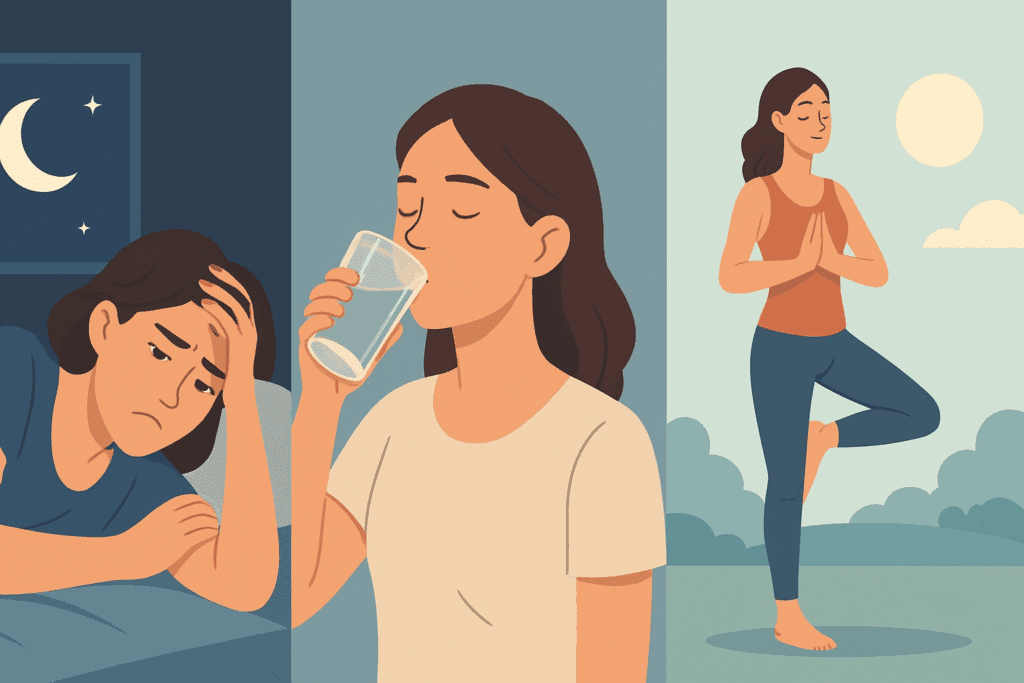
Sleep, Hydration, and Lifestyle Factors That Influence Sweet Cravings
Sleep deprivation is a major yet often overlooked driver of cravings. When you’re sleep-deprived, your body experiences hormonal shifts that increase hunger and decrease satiety. Ghrelin levels rise, while leptin levels fall, creating a perfect storm for increased appetite and preference for calorie-dense, sugary foods. Studies consistently show that individuals who sleep fewer than six hours per night report stronger cravings and higher sugar consumption.
Hydration also affects appetite regulation. Mild dehydration can manifest as hunger, particularly for sweets, as the body seeks quick energy. Drinking a glass of water when a craving hits can help determine whether thirst is actually at play. In some cases, rehydrating may completely eliminate the craving, especially if you’ve already eaten a nutritionally balanced meal.
Physical activity, too, has a modulating effect on appetite and mood. Regular movement supports stable blood sugar levels, boosts mood-enhancing neurotransmitters, and improves sleep quality—all of which help reduce the likelihood of craving sweets after meal. Incorporating daily walks, yoga, or strength training can be a powerful adjunct to mindful eating practices.
How to Mindfully Respond to Sweet Cravings After Eating
Recognizing that post-meal sweet cravings are common—and often multifactorial—can help reduce the shame or guilt that sometimes accompanies them. Rather than trying to suppress or ignore these cravings, a more sustainable approach involves acknowledging them with curiosity and compassion. Mindful eating teaches us to observe our internal states without judgment, creating space to choose our response thoughtfully.
One practical strategy is to slow down the end of your meal. Rather than jumping from your last bite of dinner straight to dessert, pause and give your body time to register fullness. Often, it takes 15 to 20 minutes for satiety signals to reach the brain. During this window, you can take a walk, drink herbal tea, or engage in a relaxing activity, then reassess whether the craving still feels urgent.
If you still feel a strong desire for something sweet, choose a small, nutrient-dense option that satisfies your palate without derailing your health goals. A piece of dark chocolate, a few dates with almond butter, or a baked apple with cinnamon can provide pleasure while still aligning with a balanced eating pattern. Mindful indulgence is not about deprivation—it’s about being present and intentional with your choices.

Redefining Sweet Satisfaction: Healthier Ways to Enjoy Sweetness
Satisfying a sweet tooth doesn’t have to involve processed sugar. Nature offers an array of naturally sweet foods that can fulfill cravings while contributing valuable nutrients. Berries, mangos, pears, and bananas are rich in fiber, antioxidants, and natural sugars that offer sweetness without the blood sugar rollercoaster.
Creative cooking can also play a role. Blending frozen bananas into a creamy “nice cream,” baking sweet potatoes with a touch of maple syrup and cinnamon, or making chia pudding with plant-based milk and berries are all examples of how to enjoy sweetness with a nutritional upgrade. These alternatives not only meet the desire for something sweet but also support long-term health.
For some, incorporating sweet-tasting herbs and spices—such as cinnamon, vanilla, or cardamom—into meals and snacks can help curb cravings without added sugar. These natural flavors activate sweet taste receptors without contributing calories, making them a helpful tool in reducing dependency on refined sweets.
Frequently Asked Questions (FAQ): Understanding and Managing Sweet Cravings After Meals
1. Can magnesium deficiency cause me to crave sweets after food?
Yes, a magnesium deficiency can play a role in sweet cravings, especially after meals. Magnesium is involved in regulating glucose and insulin levels, and when your body lacks it, you may notice an increased desire for sugary foods as a compensatory mechanism. While this isn’t the sole reason you might crave sweets after food, it’s a lesser-known factor worth considering—particularly if you also experience muscle cramps, fatigue, or poor sleep. Supplementing magnesium through whole foods like leafy greens, nuts, seeds, and legumes can help regulate cravings in a more sustainable way. If you constantly find yourself craving sweets after meals, a nutritional evaluation with a registered dietitian may uncover micronutrient imbalances contributing to these urges.
2. How does my daily caffeine intake influence why I want something sweet after I eat?
Caffeine can subtly influence your desire for sugar, especially when consumed in large quantities or on an empty stomach. While caffeine can temporarily suppress appetite, it may also lead to blood sugar fluctuations once its stimulating effects wear off—potentially increasing your chances of craving sweets after a meal. Additionally, many people pair their caffeine fix with sweeteners or sugary snacks, unintentionally conditioning the brain to associate one with the other. Over time, this pairing can trigger a habitual craving for sweetness following a meal that includes coffee or tea. To reduce this cycle, consider switching to unsweetened or lightly sweetened caffeine options and observe whether the craving still persists post-meal.
3. Is there a difference between craving sweets after lunch versus after dinner?
Yes, the timing of your sweet cravings can reveal unique underlying patterns. If you tend to crave sweets after food consumed at lunchtime, it may indicate that your midday meal lacked key macronutrients like fiber, protein, or healthy fats, leading to an energy dip in the afternoon. Conversely, craving sweets after dinner might be more influenced by emotional or psychological cues such as winding down, relaxation, or childhood conditioning. Understanding the context in which you notice these cravings helps address them more precisely—whether by altering your meal composition or rethinking your evening routine. Identifying when and why you want something sweet after you eat is the first step to tailoring mindful strategies that work with your lifestyle.
4. Can intermittent fasting affect why I crave sweets after food?
Intermittent fasting can alter your body’s hormonal balance and eating behavior in ways that sometimes intensify post-meal sugar cravings. When you fast for extended periods, your body is primed to seek quick energy sources once eating resumes—often favoring high-carb, sugary options. As a result, it’s common for people practicing time-restricted eating to experience stronger cravings for sweets after their main meal. This craving sweets after meal effect may diminish as your body adapts to the fasting schedule and blood sugar becomes more stable. To ease the transition, break your fast with balanced meals rich in fiber, protein, and complex carbs, which can blunt the urgency of the craving without eliminating satisfaction.
5. Why do some people experience a stronger craving for sweets after meals during PMS or menopause?
Hormonal fluctuations, particularly those involving estrogen and progesterone, significantly impact appetite regulation and sugar cravings. During PMS and menopause, lower estrogen levels can reduce serotonin—the “feel-good” neurotransmitter—prompting the brain to seek out sugary foods for a mood boost. This physiological shift may cause many to crave sweet after food even if their meal was filling. Additionally, stress-related cortisol spikes during hormonal transitions further increase cravings for high-calorie comfort foods. Addressing these changes with supportive habits like regular exercise, adequate sleep, and increased intake of omega-3s and B vitamins can help stabilize mood and reduce the impulse for dessert.
6. Are artificial sweeteners a good solution for people who crave sweet after food?
Artificial sweeteners might seem like a quick fix, but they can have unintended effects on your sweet cravings. While they provide the taste of sugar without the calories, some studies suggest they may actually increase the desire for sweetness over time by maintaining a high threshold for sweet taste. This means your brain might continue to crave sweet after food even more intensely because it’s accustomed to overly sweet flavors. Furthermore, artificial sweeteners can disrupt gut microbiota, potentially affecting appetite regulation. If you’re trying to reduce sugar dependence, it may be more effective to gradually retrain your palate using naturally sweet whole foods rather than relying heavily on sugar substitutes.
7. How can mindful chewing habits influence why I want something sweet after I eat?
The pace at which you eat—and how well you chew—can influence satiety cues and, consequently, the emergence of sweet cravings after meals. Fast eating often bypasses the body’s natural hunger regulation systems, leading to underrecognized fullness and a lingering sense that something is “missing” from the meal. This incompleteness may prompt a psychological need to top off the meal with a sweet treat. On the other hand, mindful chewing enhances digestion and gives your brain time to process fullness, reducing the tendency to crave sweets after food unnecessarily. Slowing down and savoring each bite can help you feel more complete and satisfied, lowering the chance of unnecessary dessert impulses.
8. Is it normal to crave sweet after food when you’re transitioning to a healthier diet?
Absolutely. In fact, many people transitioning to a healthier eating pattern report intensified cravings for sweets, especially after meals. This response is partly due to the adjustment in dopamine signaling as your body shifts away from its previous dependence on sugary foods for pleasure. When you’re no longer consuming highly processed or sugar-laden meals, your brain may still expect the post-meal sugar hit it’s grown accustomed to. Understanding why you want something sweet after you eat during this time is key to staying on track—it’s a temporary phase, not a sign of failure. Offering yourself nourishing alternatives and practicing patience can help your taste preferences evolve over time.
9. Can hydration strategies reduce the frequency of craving sweets after meals?
Yes, hydration plays a subtle but powerful role in managing post-meal cravings. Mild dehydration can mimic hunger signals, leading to misinterpreted cues that drive you to crave sweet after food. Drinking a glass of water before or after your meal can support digestion and help differentiate between genuine hunger and thirst. Additionally, herbal teas such as peppermint or licorice root can satisfy your taste buds with a hint of natural sweetness, reducing the need for dessert. Staying consistently hydrated also helps regulate blood sugar, which in turn lowers the likelihood of experiencing sharp cravings for sweets after a meal.
10. How do long-term dietary habits influence why I crave sweets after food?
Your long-term eating patterns condition your body and brain to expect certain flavor profiles and reward responses. If your meals frequently conclude with dessert or sugary beverages, your dopamine system may have been trained to anticipate that final sweet bite. Over time, this expectation can override natural satiety cues, making it harder to end a meal without seeking sugar. Long-term sugar exposure also reinforces neural pathways related to craving sweets after meals, which can take weeks or months to unlearn. Shifting your routine by ending meals with a naturally sweet fruit or herbal tea can help retrain those associations in a more health-supportive direction.
Conclusion: Embracing Cravings as an Invitation to Greater Self-Awareness and Balance
Craving sweets after meals is a common and often misunderstood experience. Whether the cause is physiological, emotional, habitual, or hormonal, these cravings provide valuable insight into how your body and mind interact with food. Instead of viewing the urge to crave sweet after food as a failure of discipline, consider it an opportunity to explore your needs more deeply.
When you ask, “why do I want something sweet after I eat?” you’re opening a dialogue with your body that can lead to more balanced, intentional living. Mindful eating empowers you to respond to cravings with curiosity rather than compulsion, allowing you to honor both your biological needs and your health aspirations.
By embracing a holistic approach that considers nutrition, sleep, movement, hydration, and emotional well-being, you can reduce the intensity and frequency of craving sweets after a meal. More importantly, you can build a healthier relationship with food—one that centers pleasure, nourishment, and self-respect. Through knowledge, mindfulness, and practice, you can transform the way you respond to sweet cravings and reclaim control over your eating choices in a way that truly supports your lifestyle and long-term wellness.
Was this article helpful? Don’t let it stop with you. Share it right now with someone who needs to see it—whether it’s a friend, a colleague, or your whole network. And if staying ahead on this topic matters to you, subscribe to this publication for the most up-to-date information. You’ll get the latest insights delivered straight to you—no searching, no missing out.
Further Reading:
Why Do You Crave Sweets After Every Meal? Here’s How To Stop
Why Do I Crave Sugar and Sweets? 4 Potential Causes
11 Ways to Stop Cravings for Unhealthy Foods and Sugar
The information contained in this article is provided for general informational purposes only and is not intended to serve as medical, legal, or professional advice. While NewsHealthWatch strives to present accurate, up-to-date, and reliable content, no warranty or guarantee, expressed or implied, is made regarding the completeness, accuracy, or adequacy of the information provided. Readers are strongly advised to seek the guidance of a qualified healthcare provider or other relevant professionals before acting on any information contained in this article. NewsHealthWatch, its authors, editors, and contributors expressly disclaim any liability for any damages, losses, or consequences arising directly or indirectly from the use, interpretation, or reliance on any information presented herein. The views and opinions expressed in this article are those of the author(s) and do not necessarily reflect the official policies or positions of NewsHealthWatch.

